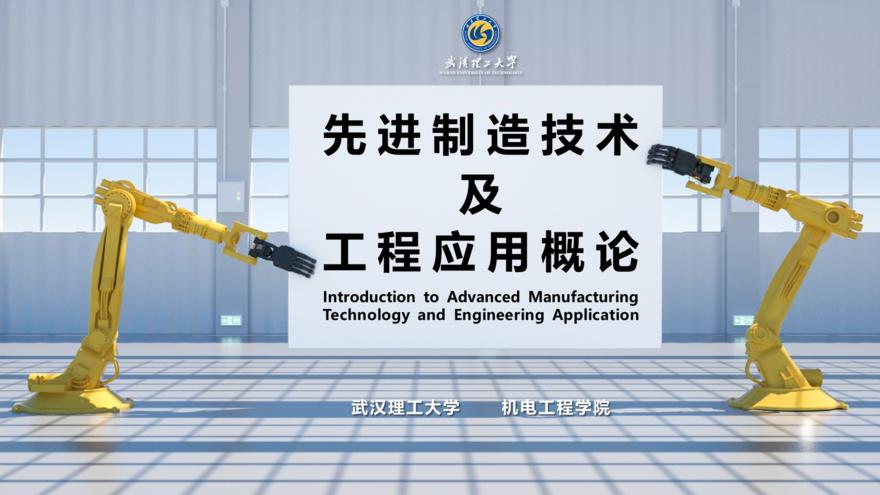
当前课程知识点:Fundamentals of Inorganic Materials Science > 2 Crystal Imperfection > 2.2.2 The rules for writing of defect reaction equation > 2.2.2 The rules for writing of defect reaction equation
返回《Fundamentals of Inorganic Materials Science》慕课在线视频课程列表
返回《Fundamentals of Inorganic Materials Science》慕课在线视频列表
我们学习了各种点缺陷的表示方法
为缺陷反应式的书写打下了基础
接着我们学习点缺陷反应式的书规则及书写
如同我们常见的化学反应一样
缺陷化学反应
也可以用缺陷反应方程式来表示
那么它也遵循一定的规则
首先我们来看第1个规则
位置关系
sites relation
对于化学计量化合物
作为溶剂的晶体所能提供的位置比例
应保持不变
但每类位置总数可以发生变化
比如
NaCl晶体
钠和氯的位置关系要保持1:1
但每个离子的总数都可以发生改变
位置关系
强调缺陷形成时
晶体中正负离子格点数之比要保持不变
而并非原子个数比保持不变
比如CaCl2溶解在KCl中
K+被Ca2+置换
产生K+的空位
但是K和氯的位置关系比仍然保持在1:1
另外
缺陷形成时
晶体中的原子数目会发生改变
比如
在系统中加入外来杂质原子
原子数目会增加
晶体尺寸增大
相反
当原子逃逸到周围环境中
原子数目减少
第二是位置增殖
形成肖特基缺陷时
质点迁移到晶体表面
位置数目增加
同常见的化学反应方程式一样
缺陷化学反应式也要遵守质量守恒
缺陷反应方程式的两边
原子或离子数目要相等
需要注意的是如果有空位形成
空位的质量为0
同样晶体要保持电中性
缺陷反应方程式两边的总有效电荷数必须相等
最后还有一个表面位置
M原子从晶体内迁移到表面用Ms表示
S代表表面位置
由于晶体内部迁移到表面所形成的原子层
与原有表面的原子层并没有本质的区别
所以在缺陷反应式中
表面位置一般不做特殊表示
下面我们举几个例子
介绍缺陷反应方程式的书写
首先我们来看第一个例子
CaCl2溶解在KCl中
缺陷反应方程式该怎么写呢
先找溶质和溶剂
箭头上方写溶剂KCl
箭头左边写CaCl2
然后右边先写置换
Ca2+置换K+
由于Ca2+为二价
K+是一价
该位置带一个正电荷
为了保持电中性
就需要形成带负电荷的缺陷
它可以是阳离子空位
也可以是阴离子间隙
当形成K+空位时
带一个负电荷
满足晶体电中性规则
为了保证缺陷反应方程式两边质量相等
两个Cl-置换Cl-
缺陷反应式如1-1所示。
当形成阴离子间隙时
缺陷反应式可以写成1-2所示
Cl-进入间隙
带一个负电荷
Cl-置换Cl-
同样也能满足电中性
质量守恒等规则
此外
Ca2+还可以进入间隙带两个正电荷
为保持电中性
需要形成带两个负电荷的缺陷
如两个K+空位
同样两个Cl-置换Cl-
缺陷反应式如1-3所示
另外
为保持电中性还可以是两个Cl-进入间隙
以上缺陷反应式都符合书写规则
那么到底哪一个才是实际发生的呢
通常来说
质点进入间隙所需要的能量较高
缺陷不容易产生
所以
CaCl2溶解在KCl中
Ca2+ 置换 K+
同时形成V'K合理
所以1-1书写方式是比较合理的
我们再练习一个
MgO溶解到Al2O3
溶质是MgO
溶剂为Al2O3
solvent is Al2O3
所以箭头左边写MgO
箭头上方写Al2O3
同样先写置换
Then write the replacement on the right
Mg2+置换Al3+带一个负电荷
为了保持电中性需要产生带正电荷的缺陷
可以是阴离子空位或阳离子间隙
当形成空位时 氧离子空位带两个正电荷
为保持电中性、
镁前边需要加个2
为了保持质量守恒
MgO.前边加个2
两个氧置换氧
反应式1-4所示
当形成阳离子间隙时
Mg2+进入间隙带两个正电荷
为了保持电中性
置换的Mg2+前加个2
为保证质量守恒
MgO前边写
3个氧置3个换氧
这样缺陷反应式就书写好了
同样质点进入间隙比较难发生
因而反应方程式1-4是比较合理的
下面总结一下书写缺陷反应方程式的基本规律
当低价正离子占据高价正离子的位置时
该位置带负电
为了保持电中性
会产生负离子空位或正离子间隙
高价正离子占据低价正离子的位置时
该位置带正电
为保持电中性
会产生正离子的空位或负离子的间隙
晶体中剩余的空隙较少
如NaCl晶体易形成Schottky缺陷
晶体中剩余的空隙较大
如CaF2萤石结构易产生Frenkel缺陷
下面是几个缺陷反应式的书写练习
大家结合这节课讲的内容
根据要求写出相应的缺陷反应式
这节课就讲到这
同学们再见
-Test for chapter 1
-2.1 Type of defect
-2.2.1 The expression methods of point defects
--2.2.1 The expression methods of point defects
--2.2.1 The expression methods of point defects
-2.2.2 The rules for writing of defect reaction equation
--2.2.2 The rules for writing of defect reaction equation
--2.2.2 The rules for writing of defect reaction equation
-2.3 Calculation of thermal defect concentration
--2.3 Calculation of thermal defect concentration
--2.3 Calculation of thermal defect concentration
-2.4 Non-stoichiometric compounds
--2.4 Non-stoichiometric compounds
--2.4 Non-stoichiometric compounds
-Homework for chapter 2
-Test for chapter 2
-3.1 The classification of solid solutions
--3.1 The classification of solid solutions
--3.1 The classification of solid solutions
-3.2 Substitutional solid solution
--3.2 Substitutional solid solution
--3.2 Substitutional solid solution
-3.3 Interstitial solid solution
--3.3 Interstitial solid solution
--3.3 Interstitial solid solution
-3.4 The research method of solid solutions
--3.4 The research method of solid solutions
--3.4 The research method of solid solutions
-3.5 Questions for crystal imperfection and solid solution
--Questions for crystal imperfection and solid solution
-Homework for chapter 3
-Test for chapter 3
-4.1 Melt structure
-4.2 The properties of the melt
--4.2.1 The properties of the melt_viscosity
--4.2.2 The properties of the melt_surface tension
--4.2 The properties of the melt
-4.3 The characteristics of glass
--4.3 The characteristics of glass
--4.3 The characteristics of glass
-4.4 The formation of glass
--4.4.1 The formation of glass_kinetics conditions
--4.4.2 The formation of glass_crystal chemical conditions
-4.5 The structure of glass
-4.6 The typical glass
-4.7 Questions for melt and glass
--Questions for melt and glass
-Test for chapter 4
-5.1 Phase equilibrium in silicate systems
--5.1 Phase equilibrium in silicate system
--5.1 Phase equilibrium in silicate system
-5.2 One-component system phase diagram
--5.2 One-component system phase diagram
--5.2 One-component system phase diagram
-5.3 Applications of one-component diagrams
--5.3 Applications of one-component diagrams
--5.3 Applications of one-component diagrams
-5.4 Binary diagrams
--5.4.1 Binary diagram with eutectic point
--5.4.2 Binary system with a congruent melting compound and one with an incongruent melting compound
--5.4.3 Other five types of phase diagrams of binary systems
-5.5 Applications of binary phase diagrams
--5.5 Applications of binary phase diagrams
--5.5 Applications of binary phase diagrams
-5.6 Ternary diagrams
--5.6.1 Representation of ternary system composition
--5.6.1 Representation of ternary system composition
--5.6.2 Three-dimensional state diagram and plane projection diagram of a simple ternary system
--5.6.2 Three-dimensional state diagram and plane projection diagram of a simple ternary system
--5.6.3 (1) Basic types of ternary phase diagrams
--5.6.3 (2) Basic types of ternary phase diagrams
--5.6.3 (3) Basic types of ternary phase diagrams
--5.6.3 Basic types of ternary phase diagrams
-5.7 Applications of ternary phase diagrams
--5.7 Applications of ternary phase diagrams
--5.7 Applications of ternary phase diagrams
-5.8 Research methods of phase equilibrium
--5.8 Research methods of phase equilibrium
--5.8 Research methods of phase equilibrium
-5.9 Questions for phase equilibria
--Questions for phase equilibria
-Homework for chaper 5
-Test for chapter 5
-6.1 Overview of diffusion
-6.2 The kinetic equations of diffusion
--6.2 The kinetic equations of diffusion
--6.2 The kinetic equations of diffusion
-6.3 The thermodynamic equation of diffusion
--6.3 The thermodynamic equation of diffusion
--6.3 The thermodynamic equation of diffusion
-6.4 Diffusion mechanisms and diffusion coefficient
--6.4 Diffusion mechanisms and diffusion coefficient
--6.4 Diffusion mechanisms and diffusion coefficient
-6.5 Diffusion in solid
-6.6 Factors affecting diffusion
--6.6 Factors affecting diffusion
--6.6 Factors affecting diffusion
-6.7 Questions for diffusion
-Homework for chaper 6
-Test for chapter 6
-7.1 Overview of solid state reactions
--7.1 Overview of solid state reactions
--7.1 Overview of solid state reactions
-7.2 Kinetic equation of solid state reaction
--7.2 Kinetic equation of solid state reaction
-7.3 Factors affecting the solid state reaction
--7.3 Factors affecting the solid state reaction
--7.3 Factors affecting the solid state reaction
-Homeword for chapter 7
-8.1 The categories of phase transformation
--8.1 The categories of phase transformation
--8.1 The categories of phase transformation
-8.2 Crystallization
--8.2.1 Crystallization thermodynamics
--8.2.2 Crystallization kinetics
-8.3 Phase Separation of glass
--8.3 Phase separation of glass
--8.3 Phase separation of glass
-8.4 Questions for phase transformation
--Questions for phase transformation
-Test for chapter 8
-9.1 Overview of sintering
-9.2 The driving forces and models of sintering
--9.2 The driving forces and models of sintering
--9.2 The driving forces and models of sintering
-9.3 Solid state sintering
--9.3.1 Evaporation-Condensation mass transfer
--9.3.2 Diffusion mass transfer
-9.4 Liquid phase sintering
--9.4.2 Solution-Precipitation mass transfer
-9.5 Grain growth and secondary recrystallization
--9.5.2 Secondary recrystallization
--9.5 Grain growth and secondary recrystallization
-9.6 Factors affecting sintering
--9.6 Factors affecting sintering
--9.6 Factors affecting sintering
-9.7 Questions for sintering
-Homework for chapter 9
-Test for chapter 9

